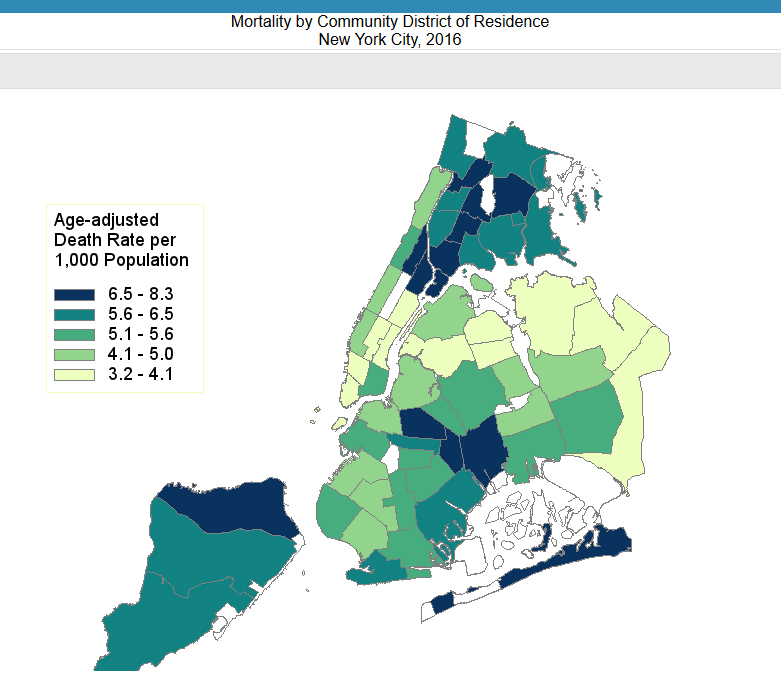Binge drinking, chlamydia and colonoscopies: New Web portal tells on New Yorkers

The neighborhoods of Brighton Beach and Coney Island have the highest death rate in New York City. There are 11.4 deaths per thousand residents in this area, versus the New York City average of 6.3.
Residents of Brooklyn Heights, on the other hand, die at the rate of 5.5 per thousand.
And trendy Bushwick has one of the lowest death rates in Brooklyn — 4.1 deaths per thousand.

Brooklyn Boro
View MoreNew York City’s most populous borough, Brooklyn, is home to nearly 2.6 million residents. If Brooklyn were an independent city it would be the fourth largest city in the United States. While Brooklyn has become the epitome of ‘cool and hip’ in recent years, for those that were born here, raised families here and improved communities over the years, Brooklyn has never been ‘uncool’.